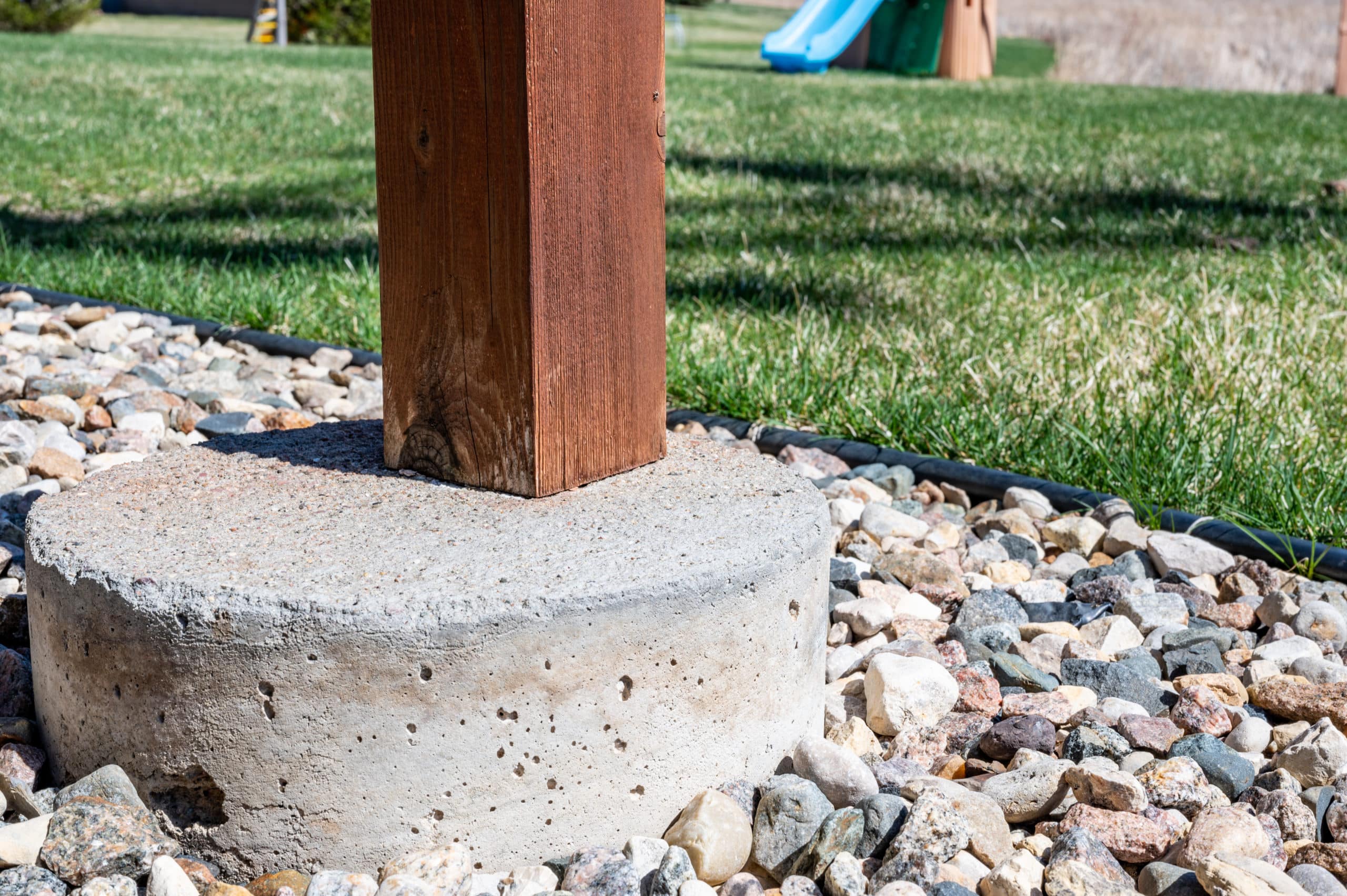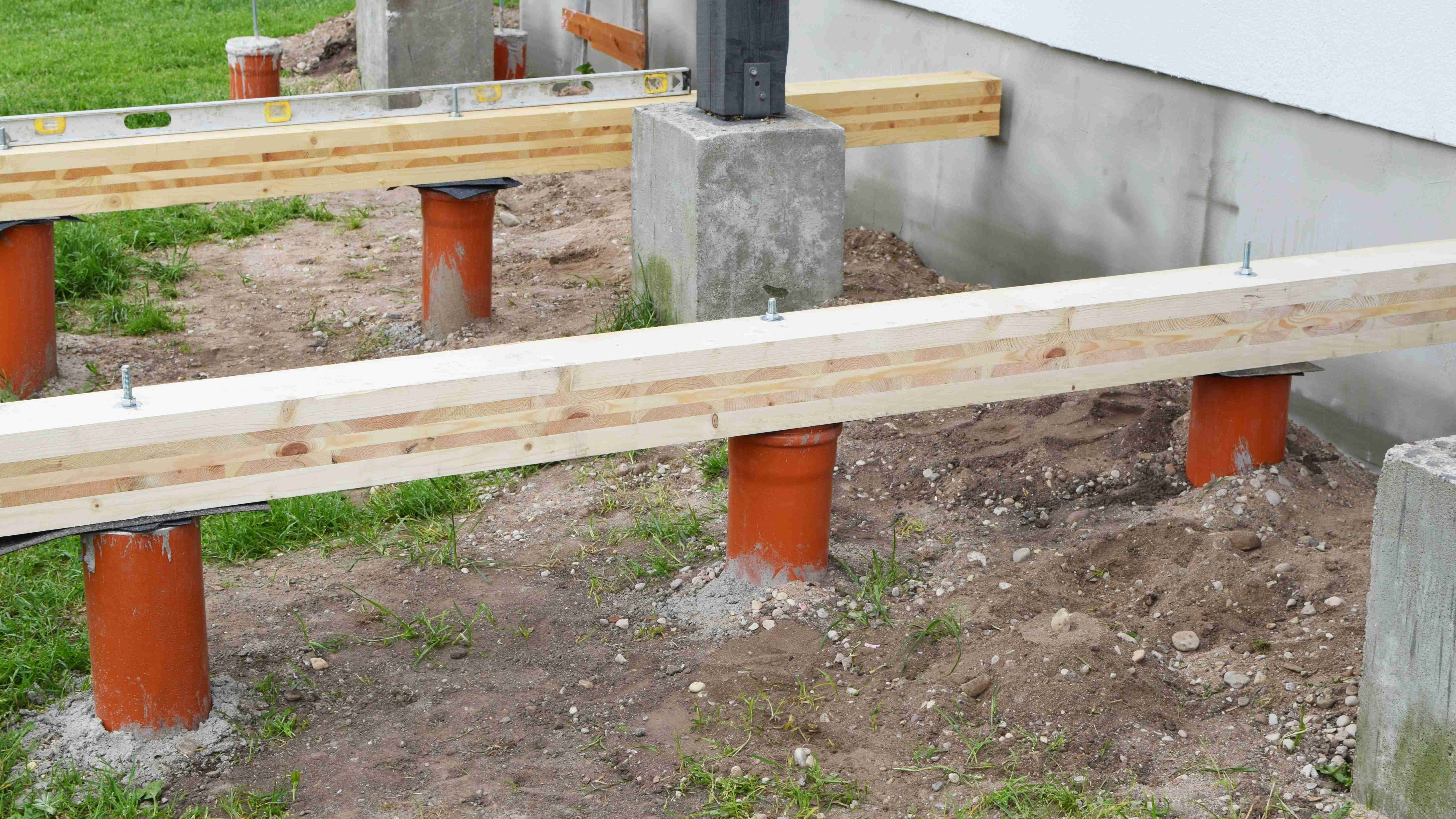From Idea to Concrete: The Crucial Role of Deck Footings in Sturdy and Safe Decks
Wiki Article
Guarantee Security and Long Life With Effectively Set Up Deck Grounds
Deck grounds may not be the most extravagant element of deck building and construction, however they play a vital function in making certain stability and long life. In this conversation, we will check out the significance of correct deck grounds, factors to think about during setup, different types of footings available, step-by-step installation overview, and maintenance pointers for ensuring lasting grounds.
Relevance of Correct Deck Footings
Why are effectively installed deck footings essential for the stability and durability of your deck? Deck footings are the structure on which the deck relaxes, moving the lots from the deck to the ground.First of all, correctly mounted deck footings distribute the weight of the deck uniformly, protecting against any type of unequal settling or sinking. This is especially essential in locations with unpredictable dirt, as it helps to mitigate the danger of the deck shifting or collapsing. Furthermore, well-installed grounds ensure that the deck stays level, protecting against any type of structural damages that can occur when a deck becomes irregular.
Secondly, correctly installed footings give a solid support for the deck, protecting against extreme motion and sway. This aids to keep the architectural honesty of the deck, lowering the threat of mishaps or injuries. It also lessens the wear and tear on the deck, enabling it to hold up against the aspects and routine use for a longer time period.
Variables to Take Into Consideration for Deck Footing Setup
When mounting deck footings, there are several important aspects to take into consideration for correct installment. Various dirt kinds have various load-bearing capacities, so it is essential to perform a dirt examination to guarantee the grounds can sustain the weight of the deck and its occupants. By taking into account these factors, you can make sure the proper installment of deck footings and enjoy a long-lasting and stable deck.Sorts Of Deck Footings to Pick From
There are numerous various kinds of deck footings available for you to pick from. Each type has its own benefits and disadvantages, so it's important to consider your particular demands and the conditions of your deck prior to deciding.One typical kind of deck footing is the concrete ground. This entails digging openings in the ground and putting concrete into them to develop a strong structure. Concrete grounds are sturdy and give superb stability, making them suitable for decks in locations with challenging soil conditions or high wind loads.
Another option is the helical pier footing, which includes a steel shaft with helical plates that are screwed right into the ground. These grounds fast to mount and can be made use of in numerous soil types, consisting of sandy or clay soils. They are likewise flexible, permitting for easy progressing of the deck.
Sonotube grounds are one more prominent selection. These footings are produced by positioning a cardboard tube in a hole and loading it with concrete. Sonotube footings are reasonably easy to install and supply sufficient stability for he said smaller decks or in areas with much less demanding dirt problems.

When choosing the sort of deck ground, it's crucial to consider official website factors such as dirt conditions, deck size and weight, local building ordinance, and personal preferences. By selecting the appropriate ground type, you can ensure the stability and durability of your deck.
Step-by-Step Guide for Installing Deck Footings

Figure out the location: Start by marking the exact position of each ground making use of stakes and string (Deck Footings). Consider any type of local building ordinance or laws concerning setback distances
Dig the holes: Make use of a post hole digger or an auger to dig the holes for the grounds. The deepness will depend on the frost line in your location and the sort of dirt. Generally, a deepness of a minimum of 36 inches is recommended for stability.
Level the holes: Make certain that the bottoms of the holes are degree (Deck Footings). This can be accomplished by utilizing a degree or a straight board throughout the top of the openings
Add gravel: Area a layer of crushed rock at the end of each hole to improve water drainage and prevent the footing from sinking right into the soil with time.
Place the ground forms: Insert the ground develops right into the holes, ensuring they are focused and level. Use stakes to secure them in area.
Mix and put concrete: Follow the guidelines on the concrete mix bag to prepare the concrete. Pour the concrete right into the ground forms, loading them entirely.
Smooth the surface: Make use of a trowel to smooth the surface area of the concrete and get rid of any kind of air pockets. Enable the concrete to cure according to the manufacturer's guidelines.
Upkeep Tips for Durable Deck Footings
Appropriate upkeep is important for ensuring the longevity and stability of deck footings. By consistently examining and preserving your deck grounds, you can protect against damages and possible safety dangers. One important facet of maintenance is to routinely inspect for any signs of degeneration, such as splits or movement in the grounds. If Read More Here you notice any kind of concerns, it is very important to address them without delay to avoid more damage.Regular cleansing is additionally important for maintaining deck footings. Vegetation, debris, and dust can collect around the footings, which can lead to moisture accumulation and decay. Cleansing the footings routinely, using a brush or a pressure washer, can aid prevent these concerns and prolong the life expectancy of your deck.
Along with cleaning, it is necessary to keep the area around the footings free from any blockages. Prevent stacking products against the footings or allowing plants to expand too near to them. These obstructions can trap wetness and create the footings to degrade in time.
Lastly, normal resealing of the footings is suggested to secure them from moisture and other ecological variables. Using a water resistant sealer can aid avoid water damages and prolong the lifespan of the grounds.
Final Thought
In final thought, proper setup of deck footings is essential for ensuring security and long life of your deck. Factors such as dirt type, lots ability, and local building regulations need to be thought about when choosing the best type of deck grounds. Complying with a step-by-step guide for setup and normal maintenance will certainly aid to guarantee the footings stay long lasting and lasting.In this discussion, we will discover the value of correct deck footings, factors to consider throughout installation, various kinds of grounds available, step-by-step setup guide, and upkeep ideas for guaranteeing resilient footings. Deck grounds are the structure on which the deck relaxes, transferring the load from the deck to the ground.One common type of deck ground is the concrete ground. Insert the footing types: Place the ground forms into the holes, guaranteeing they are focused and degree.In conclusion, proper installment of deck grounds is essential for making sure security and long life of your deck.
Report this wiki page